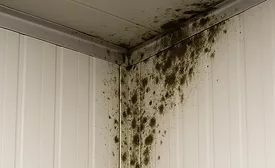Home » audits
Articles Tagged with ''audits''
Beyond the Score: Risk-Focused Audits and the Ethics of Prevention
An urgent call to rethink food safety auditing from the ground up
June 24, 2025
Addressing the Workforce Shortage in Food Safety: A Critical Challenge for a Secure Food System
Despite growing demand for rigorous oversight, the food safety sector faces a significant workforce shortage, particularly in roles related to auditing, inspections, and assessments
April 11, 2025
Rings of Defense: Justifying and Negotiating Food Safety Actions to Regulators
In the stress of an inspection where a noncompliance is found, it is important to consider all avenues for corrective actions
October 9, 2023
Why a Paradigm Shift is Needed in Food Safety Auditing
The future of food safety auditing will be different from what we know today, but the pace of change must be faster
February 6, 2023
Never miss the latest news and trends driving the food safety industry
eNewsletter | Website | eMagazine
JOIN TODAY!Copyright ©2025. All Rights Reserved BNP Media.
Design, CMS, Hosting & Web Development :: ePublishing











